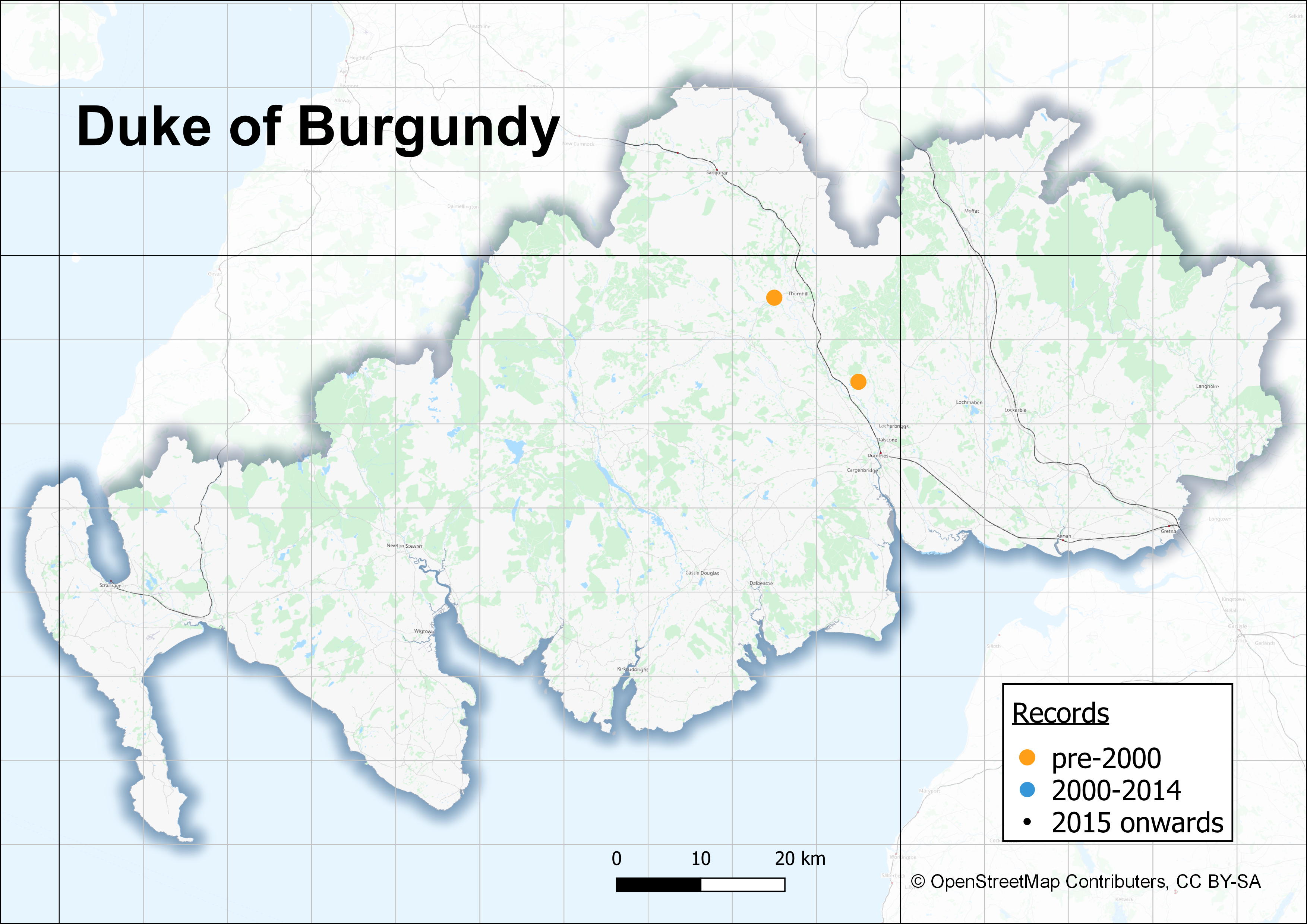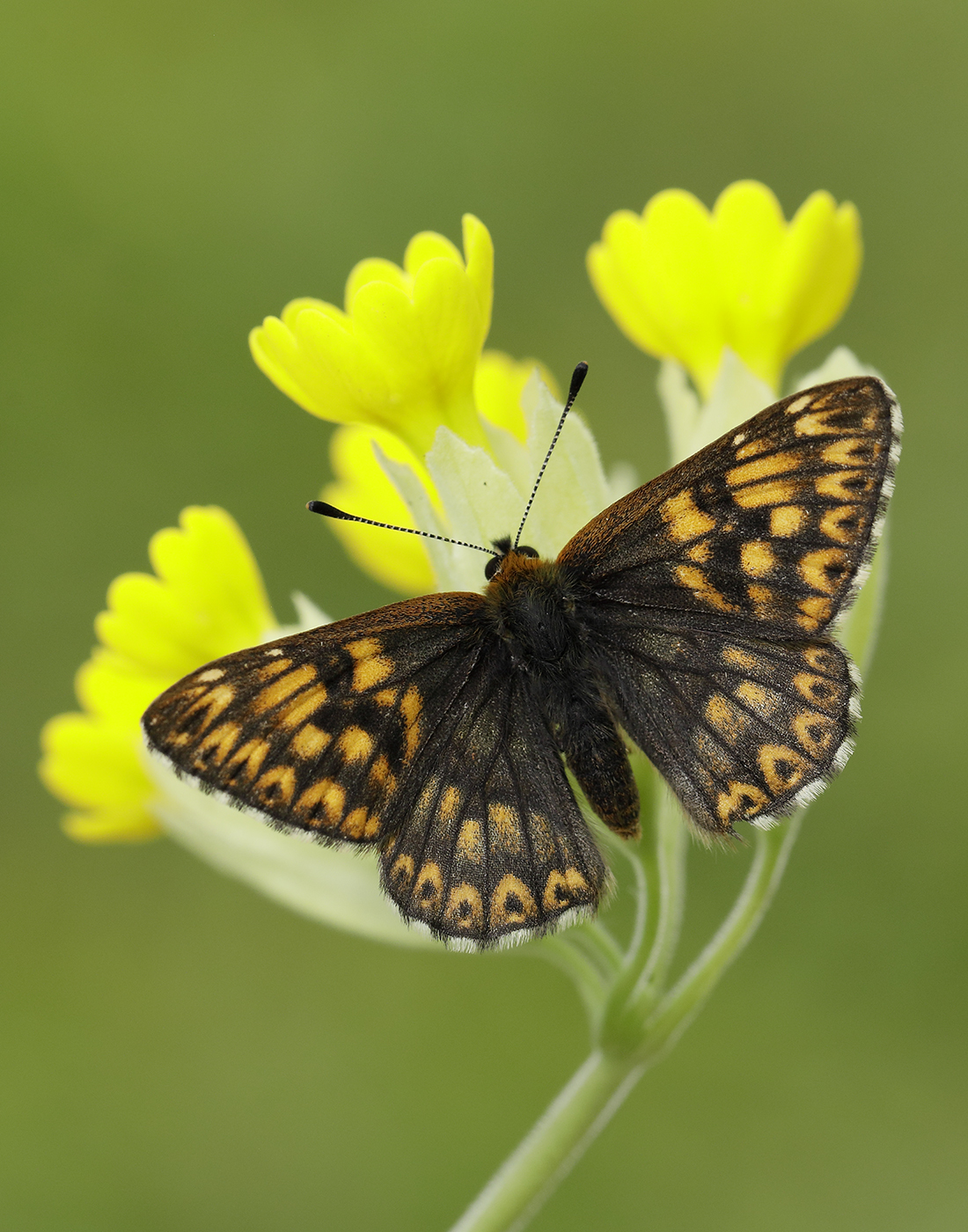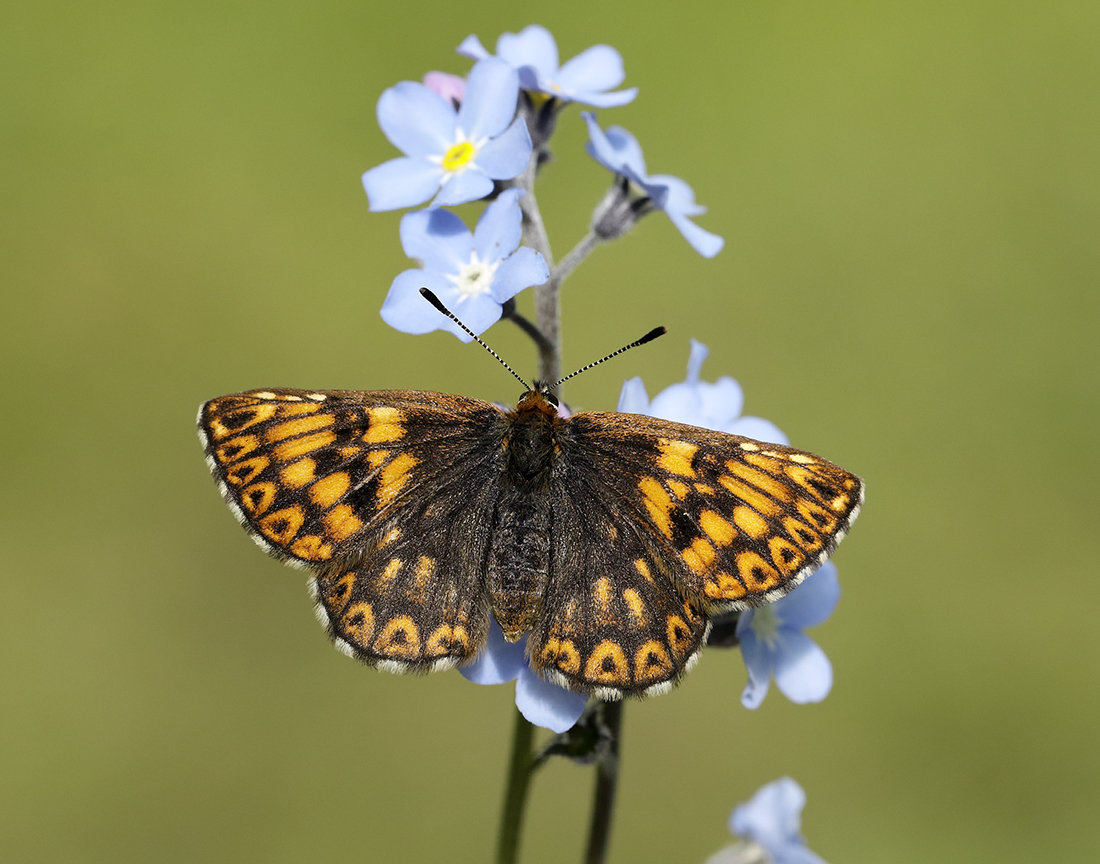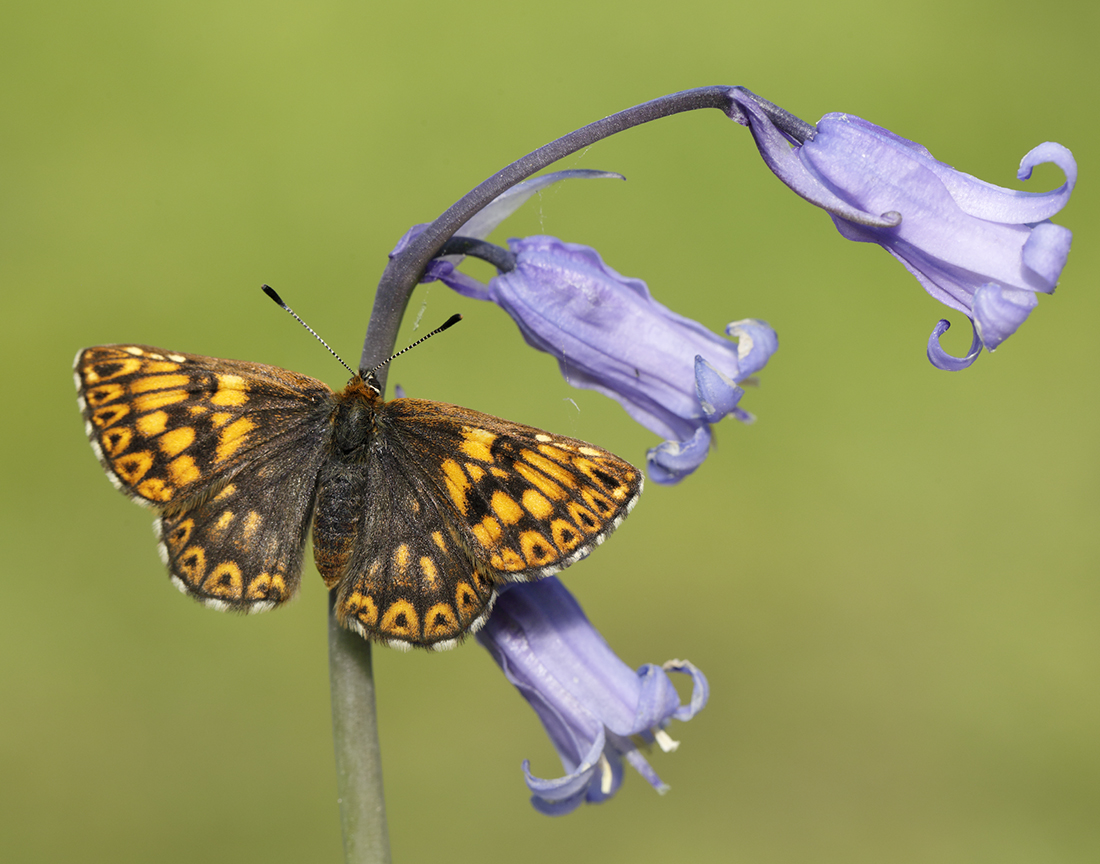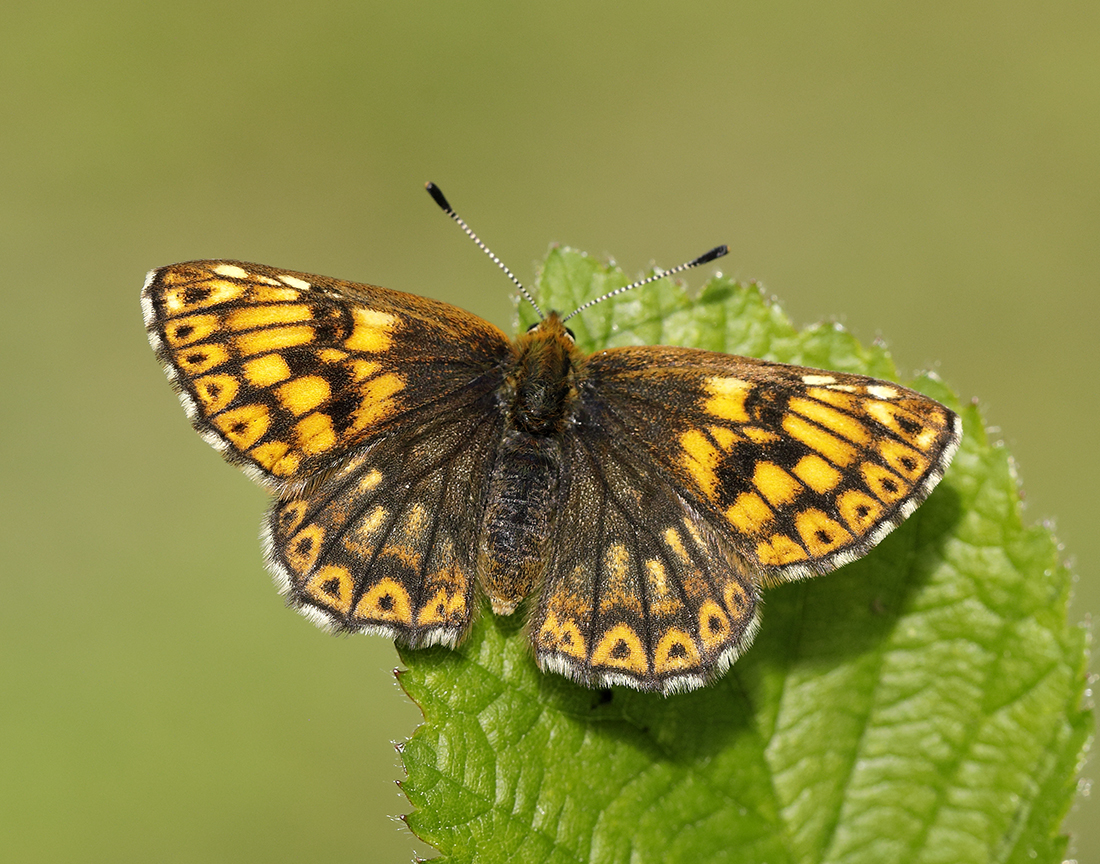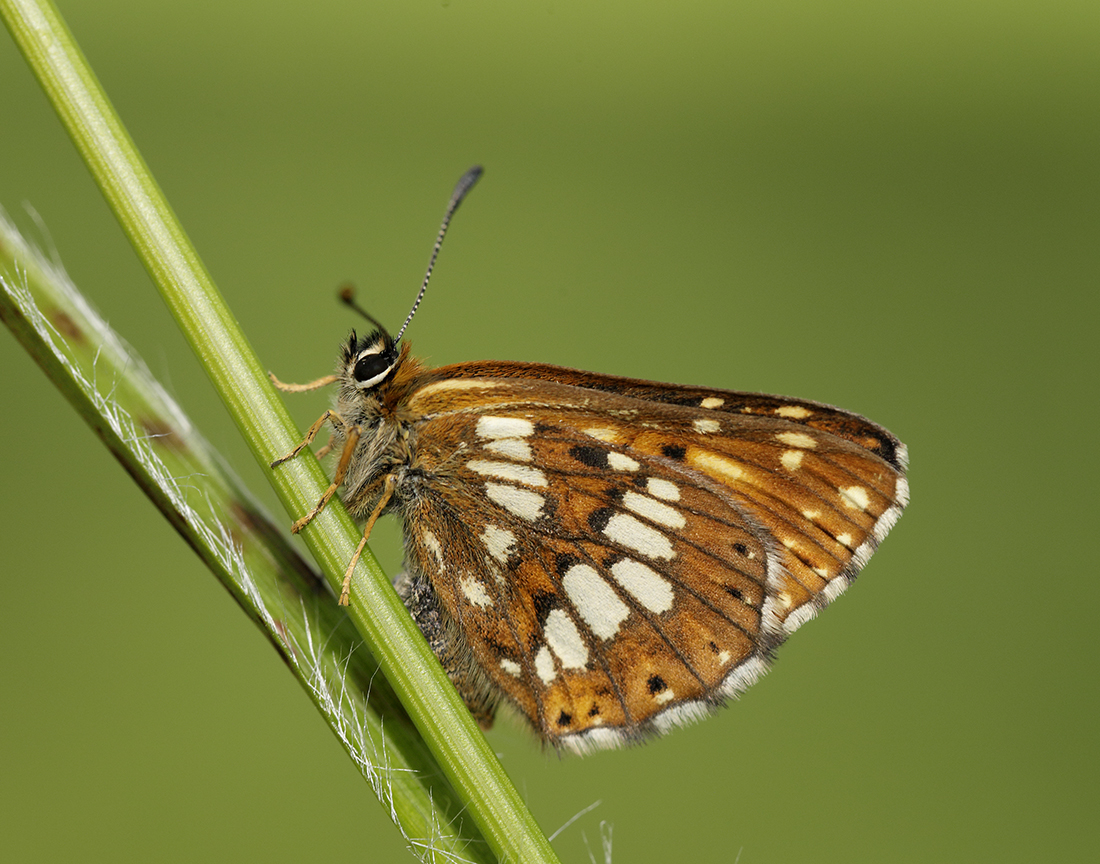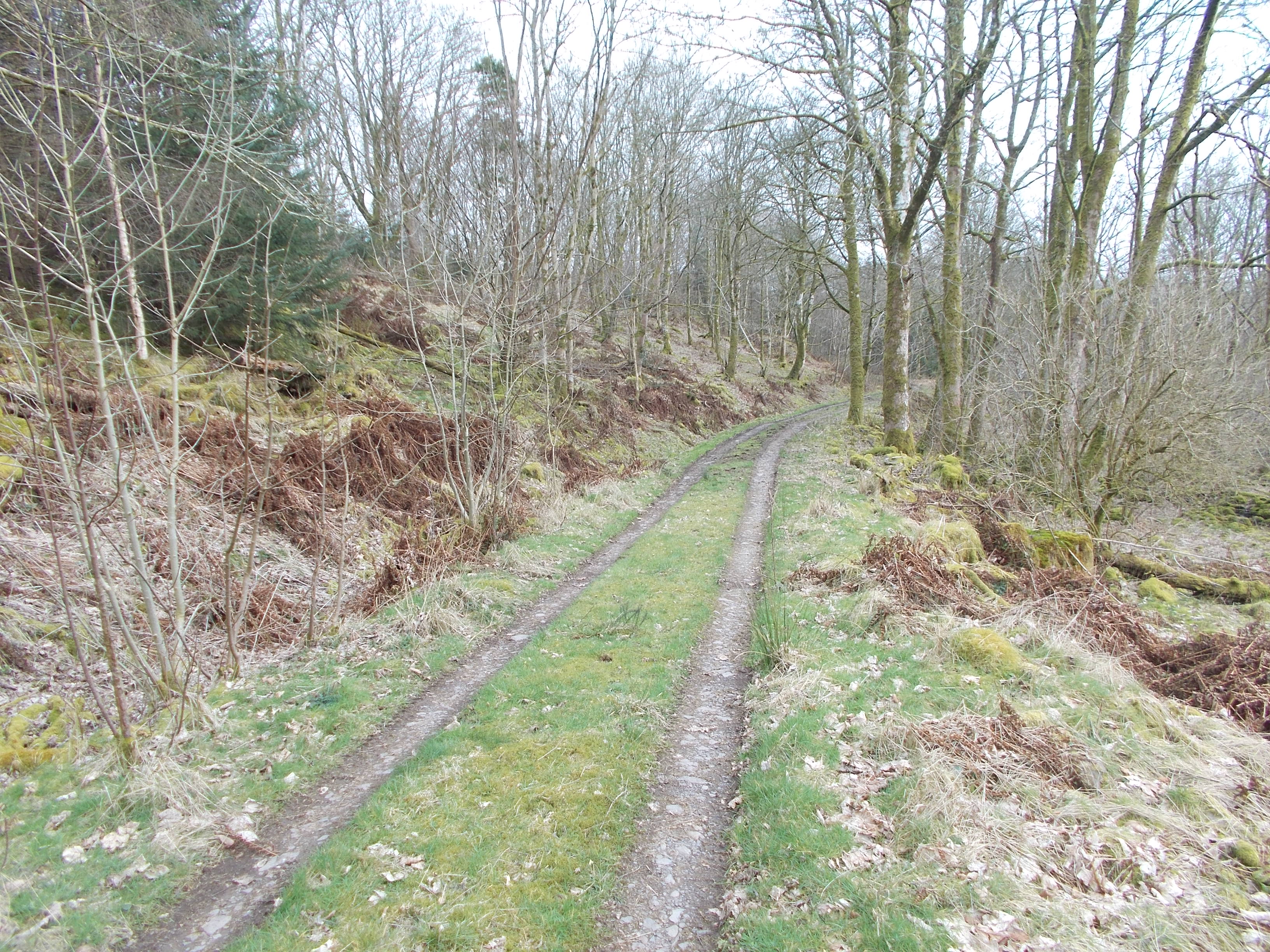There are historical records for the Duke of Burgundy from the mid-19th century, at Closeburn and Dalswinton, just a few miles north of Dumfries ( and also a possible record from Ruberslaw in the Borders). Unfortunately there do not appear to be any Scottish specimens so the records cannot be absolutely confirmed.
The only UK colonies are now in England where the Duke of Burgundy is now very scarce and declining. There are just a handful of colonies remaining around the Morecambe Bay, plus a few recently-discovered ones in the Lake District near Windermere. More colonies exist in North Yorkshire and further south.
Identification
Formerly known as the ‘Duke of Burgundy Fritillary’, it could easily be confused with a fritillary due to its orange and brown upper-wings, and pale patches on the undersides. However, it belongs to a different butterfly family, the ‘Metalmarks’ (most of which are tropical), and is the only representative of the family in Europe.
Life cycle & flight period
One generation a year, the adults peaking between early May and mid-June. Overwinters as a pupa.
Larval foodplant
The caterpillars feed on species of Primula – Cowslips and Primroses.
Habitats
The butterfly can live in a variety of habitats, as long as there are plenty of well-grown primroses or cowslips. Damper habitats such as sunny, open woodland and the edges of moorland provide primroses, while cowslips will be the main food plant on limestone and chalk grassland.

